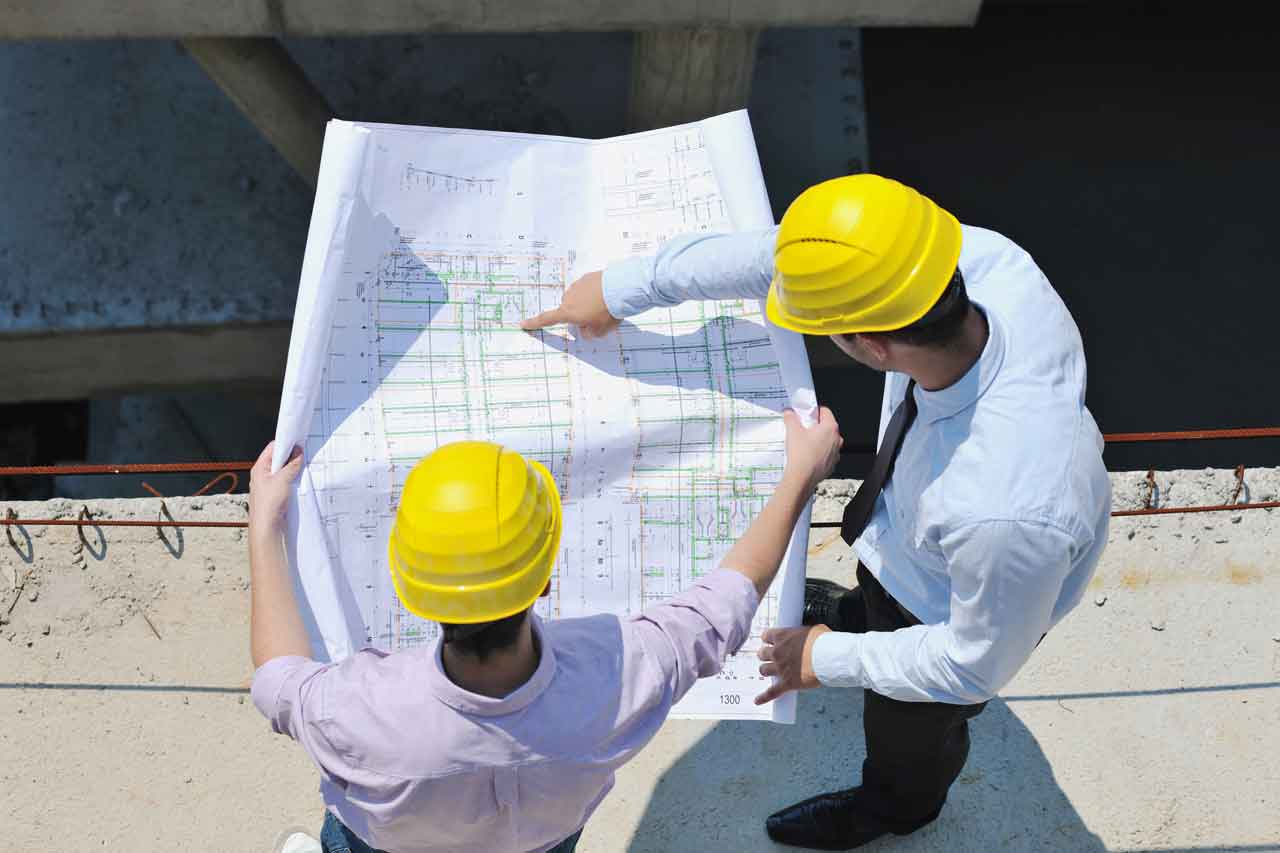Construction Planning: The Foundation of Successful Project Execution

Introduction
Construction planning is a critical phase in the lifecycle of any construction project. It serves as the blueprint for how a project will be executed, managed, and completed. Effective construction planning ensures that resources are allocated efficiently, risks are mitigated, and the project is delivered on time and within budget. This article delves into the intricacies of construction planning, exploring its importance, key components, methodologies, and best practices. By the end of this comprehensive guide, you will have a thorough understanding of how construction planning can make or break a project.
The Importance of Construction Planning
1. Ensuring Project Feasibility
Before any construction work begins, it is essential to determine whether the project is feasible. Construction planning involves a detailed analysis of the project’s scope, budget, timeline, and resources. This analysis helps stakeholders make informed decisions about whether to proceed with the project or make necessary adjustments.
2. Resource Allocation
Construction projects require a wide range of resources, including labor, materials, equipment, and finances. Effective planning ensures that these resources are allocated optimally, minimizing waste and maximizing efficiency. This is particularly important in large-scale projects where resource mismanagement can lead to significant cost overruns and delays.
3. Risk Management
Construction projects are inherently risky, with potential challenges ranging from unforeseen site conditions to supply chain disruptions. Construction planning involves identifying potential risks and developing strategies to mitigate them. This proactive approach helps minimize the impact of risks on the project’s timeline and budget.
4. Timely Completion
Time is of the essence in construction projects. Delays can lead to increased costs, contractual penalties, and reputational damage. Construction planning involves creating a detailed project schedule that outlines the sequence of activities, their durations, and dependencies. This schedule serves as a roadmap for the project, ensuring that all tasks are completed on time.
5. Cost Control
Construction projects are often subject to budget constraints. Effective planning helps control costs by providing a clear understanding of the project’s financial requirements. This includes estimating costs, setting budgets, and monitoring expenditures throughout the project’s lifecycle. By keeping costs in check, construction planning helps ensure the project’s financial viability.
Key Components of Construction Planning
1. Project Scope Definition
The first step in construction planning is defining the project’s scope. This involves outlining the project’s objectives, deliverables, and constraints. A well-defined scope provides a clear understanding of what needs to be achieved and serves as the foundation for all subsequent planning activities.
2. Site Analysis
Site analysis is a critical component of construction planning. It involves assessing the physical characteristics of the construction site, including topography, soil conditions, and environmental factors. This information is essential for designing the project and determining the feasibility of construction activities.
3. Design and Engineering
The design and engineering phase involves creating detailed plans and specifications for the project. This includes architectural drawings, structural designs, and mechanical, electrical, and plumbing (MEP) systems. The design phase also involves obtaining necessary permits and approvals from regulatory authorities.
4. Resource Planning
Resource planning involves identifying and allocating the resources required for the project. This includes labor, materials, equipment, and finances. Resource planning ensures that all necessary resources are available when needed, minimizing delays and disruptions.
5. Scheduling
Scheduling is a critical component of construction planning. It involves creating a detailed project schedule that outlines the sequence of activities, their durations, and dependencies. The schedule serves as a roadmap for the project, ensuring that all tasks are completed on time.
6. Cost Estimation and Budgeting
Cost estimation involves calculating the total cost of the project, including labor, materials, equipment, and overheads. Once the cost estimate is complete, a budget is set, outlining the financial resources available for the project. Cost estimation and budgeting help ensure that the project remains financially viable.
7. Risk Management
Risk management involves identifying potential risks and developing strategies to mitigate them. This includes assessing the likelihood and impact of risks, as well as developing contingency plans. Effective risk management helps minimize the impact of risks on the project’s timeline and budget.
8. Quality Management
Quality management involves ensuring that the project meets the required standards and specifications. This includes developing a quality management plan, conducting inspections, and implementing corrective actions. Quality management helps ensure that the project delivers the desired outcomes.
9. Communication Planning
Effective communication is essential for the success of any construction project. Communication planning involves identifying stakeholders, determining their information needs, and developing a communication plan. This ensures that all stakeholders are kept informed and that any issues are addressed promptly.
10. Procurement Planning
Procurement planning involves identifying the materials, equipment, and services required for the project and developing a procurement strategy. This includes selecting suppliers, negotiating contracts, and managing procurement activities. Effective procurement planning helps ensure that all necessary resources are available when needed.
Methodologies in Construction Planning
1. Critical Path Method (CPM)
The Critical Path Method (CPM) is a widely used project management technique that helps identify the sequence of activities that determine the project’s duration. By identifying the critical path, project managers can focus on the activities that have the most significant impact on the project’s timeline. CPM also helps identify potential bottlenecks and areas where resources can be reallocated to optimize the schedule.
2. Program Evaluation and Review Technique (PERT)
The Program Evaluation and Review Technique (PERT) is another project management tool that is particularly useful for complex projects with uncertain activity durations. PERT uses probabilistic estimates to calculate the expected duration of each activity, providing a more accurate project timeline. PERT also helps identify the critical path and assess the impact of uncertainties on the project’s schedule.
3. Gantt Charts
Gantt charts are a visual tool used to represent the project schedule. They provide a graphical representation of the project’s activities, their durations, and dependencies. Gantt charts are particularly useful for tracking progress and identifying potential delays. They also help communicate the project schedule to stakeholders in a clear and concise manner.
4. Lean Construction
Lean construction is a methodology that focuses on maximizing value and minimizing waste in construction projects. It involves streamlining processes, improving communication, and optimizing resource allocation. Lean construction emphasizes continuous improvement and collaboration among all stakeholders. By adopting lean principles, construction projects can achieve greater efficiency and deliver better outcomes.
5. Building Information Modeling (BIM)
Building Information Modeling (BIM) is a digital representation of the physical and functional characteristics of a construction project. BIM allows project stakeholders to visualize the project in 3D, simulate construction activities, and identify potential conflicts before they occur. BIM also facilitates collaboration among architects, engineers, and contractors, improving coordination and reducing errors.
6. Agile Project Management
Agile project management is a flexible and iterative approach to project management. It involves breaking the project into smaller, manageable tasks and delivering them in short iterations. Agile project management emphasizes collaboration, adaptability, and continuous improvement. While traditionally used in software development, agile principles are increasingly being applied to construction projects to improve flexibility and responsiveness.

Best Practices in Construction Planning
1. Early Involvement of Stakeholders
Early involvement of stakeholders is crucial for successful construction planning. This includes clients, architects, engineers, contractors, and suppliers. By involving stakeholders from the outset, project managers can ensure that all perspectives are considered, and potential issues are addressed early in the planning process.
2. Comprehensive Risk Assessment
A comprehensive risk assessment is essential for effective construction planning. This involves identifying potential risks, assessing their likelihood and impact, and developing mitigation strategies. By proactively addressing risks, project managers can minimize their impact on the project’s timeline and budget.
3. Clear Communication
Clear communication is essential for the success of any construction project. This includes regular updates, transparent reporting, and open channels of communication among all stakeholders. Effective communication helps ensure that everyone is on the same page and that any issues are addressed promptly.
4. Use of Technology
Technology plays a crucial role in modern construction planning. This includes project management software, BIM, and other digital tools that facilitate collaboration, improve accuracy, and enhance efficiency. By leveraging technology, project managers can streamline planning processes and improve project outcomes.
5. Continuous Monitoring and Control
Continuous monitoring and control are essential for ensuring that the project stays on track. This involves regularly reviewing the project’s progress, comparing it to the plan, and making necessary adjustments. By maintaining tight control over the project, managers can identify and address issues before they escalate.
6. Flexibility and Adaptability
Construction projects are often subject to changes and uncertainties. Effective construction planning requires flexibility and adaptability to respond to these changes. This includes having contingency plans in place and being prepared to adjust the project schedule and resources as needed.
7. Focus on Quality
Quality should be a top priority in construction planning. This includes developing a quality management plan, conducting regular inspections, and implementing corrective actions. By focusing on quality, project managers can ensure that the project meets the required standards and delivers the desired outcomes.
8. Sustainability Considerations
Sustainability is becoming increasingly important in construction planning. This includes considering the environmental impact of the project, using sustainable materials, and implementing energy-efficient designs. By incorporating sustainability considerations into the planning process, project managers can contribute to a more sustainable built environment.
Challenges in Construction Planning
1. Unforeseen Site Conditions
One of the most significant challenges in construction planning is dealing with unforeseen site conditions. This includes unexpected soil conditions, underground utilities, and environmental constraints. These conditions can lead to delays, cost overruns, and design changes. Effective site analysis and risk management are essential for mitigating the impact of unforeseen site conditions.
2. Supply Chain Disruptions
Supply chain disruptions can have a significant impact on construction projects. This includes delays in the delivery of materials, equipment shortages, and price fluctuations. Effective procurement planning and risk management are essential for mitigating the impact of supply chain disruptions.
3. Regulatory Compliance
Construction projects are subject to a wide range of regulations and standards. This includes building codes, environmental regulations, and safety standards. Ensuring regulatory compliance can be challenging, particularly in complex projects. Effective communication with regulatory authorities and thorough planning are essential for navigating the regulatory landscape.
4. Labor Shortages
Labor shortages are a common challenge in the construction industry. This includes a lack of skilled workers, high turnover rates, and labor disputes. Effective resource planning and workforce management are essential for addressing labor shortages and ensuring that the project has the necessary manpower.
5. Budget Constraints
Budget constraints are a common challenge in construction projects. This includes limited financial resources, cost overruns, and unexpected expenses. Effective cost estimation, budgeting, and cost control are essential for ensuring that the project remains financially viable.
6. Coordination and Collaboration
Construction projects involve multiple stakeholders, including clients, architects, engineers, contractors, and suppliers. Effective coordination and collaboration among these stakeholders are essential for the success of the project. This includes clear communication, regular meetings, and the use of collaborative tools.
Conclusion
Construction planning is the foundation of successful project execution. It involves a comprehensive and systematic approach to defining the project’s scope, allocating resources, managing risks, and ensuring timely and cost-effective completion. By adopting best practices and leveraging modern methodologies and technologies, project managers can overcome the challenges of construction planning and deliver successful projects.
Effective construction planning requires a proactive approach, with a focus on early stakeholder involvement, comprehensive risk assessment, clear communication, and continuous monitoring and control. By prioritizing quality and sustainability, project managers can ensure that the project meets the required standards and contributes to a more sustainable built environment.
In conclusion, construction planning is a complex and multifaceted process that requires careful consideration of various factors. However, with the right approach and tools, it is possible to achieve successful project outcomes and deliver high-quality construction projects that meet the needs of all stakeholders.
